Introduction
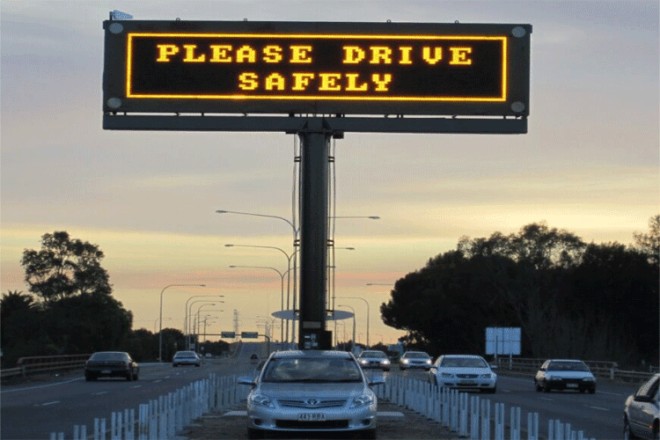
When you are driving on the highway or traveling through busy city streets, have you ever noticed those bright and clear Afficheurs LED? They not only beautify the city’s scenery but are also an important guide for our daily travel.
So, why have these traffic LED displays risen rapidly in recent years and become the “stars” of traffic management and information release? This article will take you to an in-depth understanding of the mysteries behind it, from technical characteristics to market demand, from practical applications to future trends, and comprehensively analyze why traffic LED displays are so popular, revealing to you how they escort our travel, improve traffic efficiency, and ensure travel safety.
Are you ready? Let’s explore the extraordinary charm of traffic LED displays together!
1. Requirements for LED displays in the transportation field
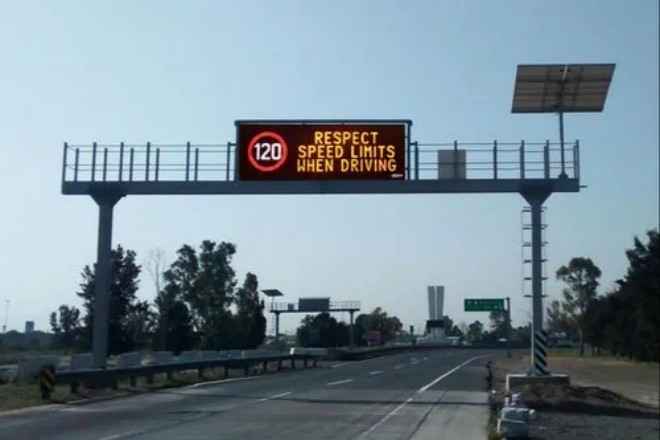
In the transportation field, in order to meet the growing travel needs and improve the efficiency and safety of traffic management, the demand for LED displays is becoming increasingly clear and specific. The following is a detailed explanation of several core requirements for LED displays in the transportation field:
1). Real-time and dynamic update requirements
The transportation field has extremely high requirements for the real-time nature of information. Therefore, the required LED display must be able to respond quickly and update dynamically.
This means that when road conditions change (such as traffic accidents, road construction, traffic control, etc.), the display screen can immediately capture these changes and pass the latest information to drivers and passengers.
Similarly, public transportation information (such as the arrival time of trains, flights, and buses) also needs to be updated in real-time to ensure that passengers can accurately grasp the travel time.
2). Haut luminosité and clarity requirements
Due to the complex traffic environment, including unfavorable factors such as direct sunlight and rain erosion, the transportation field has special requirements for the brightness and clarity of LED display screens.
The display screen needs to have sufficient brightness to clearly display information even in strong sunlight, and at the same time, the clarity must be high enough to ensure that drivers and passengers can easily read and understand the displayed content.
3). Remote control and management requirements
Traffic management requires efficient and centralized control. Therefore, the transportation field is in strong demand for remote control and management capabilities for LED display screens.
This means that managers can uniformly manage and update content on multiple display screens in the traffic management center without having to visit the site in person.
In addition, the display screen also needs to support remote fault diagnosis and repair to reduce maintenance costs and improve operational efficiency.
4). Diversified information display requirements
There are many types of information in the transportation field, including road conditions, traffic regulations, advertisements, etc.
Therefore, the required LED display must have a variety of information display capabilities. This requires the display to support information display in multiple formats such as text, images, animations, etc., and to be able to flexibly switch and combine as needed.
5). Safety and reliability requirements
In the transportation field, safety is always the first priority. Therefore, there are also extremely high requirements for the safety and reliability of LED display screens.
The display screen needs to have good stability and durability and can operate stably for a long time in harsh outdoor environments.
At the same time, it is also necessary to have safety functions such as overload protection and short circuit protection to ensure that the display screen and personnel can be protected in emergencies.
2. What are the advantages of LED display screens in the transportation field?
The advantages of LED display screens in the transportation field are mainly reflected in the following aspects:
1). High brightness and clarity to ensure that information is readable
LED display screens have the characteristics of high brightness and high clarity, which can ensure that the displayed content is clearly visible even in outdoor environments with direct sunlight.
This is particularly important in the transportation field, because drivers and passengers need to obtain traffic information quickly and accurately in order to make correct decisions.
High-brightness display screens ensure that information is still eye-catching under strong light, while high definition ensures the accuracy and readability of information.
2). Real-time updates and dynamic traffic information
LED display screens can update traffic information in real-time, including road conditions, traffic control, accident warnings, etc.
This real-time nature is crucial for traffic management because it can help drivers understand road conditions in a timely manner and plan travel routes reasonably, thereby avoiding congestion and delays.
At the same time, for public transportation, such as train stations and subway stations, LED display screens can display train schedules, flight information, etc., in real-time to improve travel efficiency.
3). Remote control and management to reduce maintenance costs
LED display screens support remote control and management, which means that managers can uniformly manage and update content for multiple display screens in the traffic management center.
This centralized management method not only improves operational efficiency but also reduces maintenance costs.
In addition, remote fault diagnosis and repair functions also further reduce the need for on-site maintenance and improve the stability and reliability of the overall system.
4). Diversified information display to enhance user experience
LED display screens can support information display in multiple formats such as text, images, and animations, meeting the needs of the transportation field for diversified information.
For example, on highways, LED display screens can display road conditions, traffic control tips, etc.; at train stations or subway stations, they can display train schedules, advertisements, etc.
This diversified information display method not only improves the user experience but also increases the fun and interactivity in the transportation field.
5). Strong adaptability and stable operation in various environments
The traffic environment is complex and changeable, including high temperature, low temperature, humidity, dust and other unfavorable factors. However, LED display screens have strong adaptability and can operate stably in various environments.
It adopts advanced heat dissipation technology and dustproof design to ensure reliability and stability in harsh environments. This makes the application of LED display screens in the transportation field more extensive and reliable.
3. Specific application of LED display screens in the transportation field
LED display screens are widely and diversely used in the transportation field. They not only improve the transmission efficiency of traffic information but also enhance the intelligent level of traffic management. The following are several specific application examples of LED display screens in the transportation field:
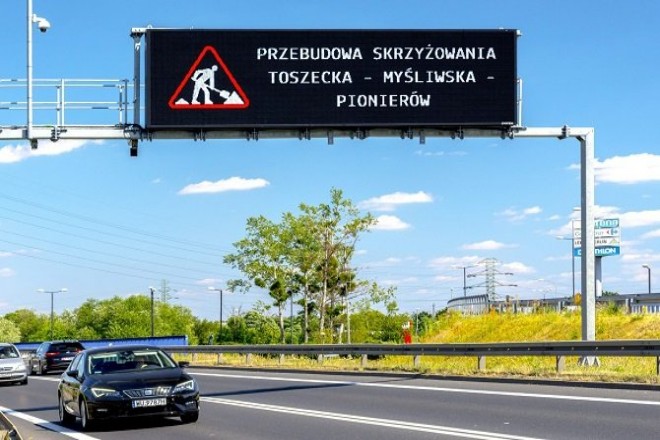
1). Highways and important intersections
We often see LED display screens along highways and important traffic intersections.
Analyse fonctionnelle :
Real-time information broadcast: These display screens will update key information such as traffic delays and road construction in real time, helping drivers to adjust their driving routes in time and avoid unnecessary congestion.
Law publicity: They will also display traffic regulations and tips on prohibiting the carrying of dangerous goods, improve drivers’ safety awareness and ensure traffic safety.
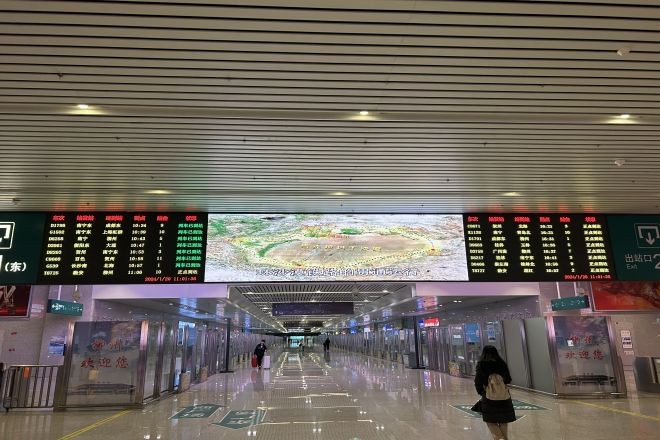
2). Public transportation hubs
LED display screens are almost everywhere in public transportation hubs, such as train stations, subway stations, bus stations, and aéroports.
Analyse fonctionnelle :
Travel information prompts: The display screens will display train schedules, flight information, bus routes, etc. in real time to help passengers accurately grasp travel time and avoid missing the train.
Station navigation and advertising: In addition to traffic information, they will display station navigation information and advertising content to improve the service level of the station while also providing passengers with entertainment and shopping options.
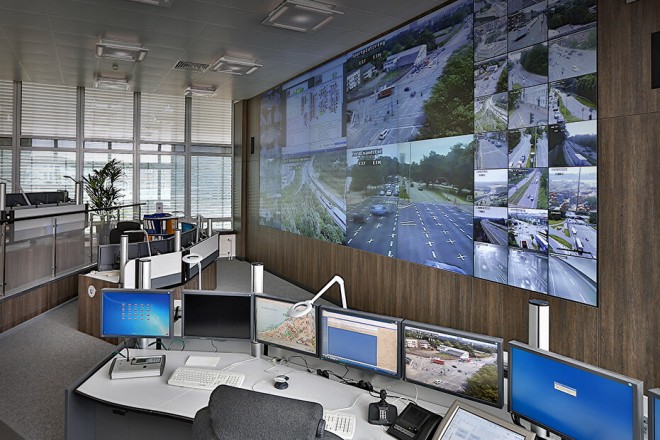
3). Traffic control center
In the traffic control center, large LED display screens are an indispensable part.
Analyse fonctionnelle :
Data visualization: The display screens will display key information, such as traffic data, congestion conditions, vehicle speeds, etc., in real-time, providing managers with an intuitive decision-making basis.
Traffic light monitoring: At complex traffic intersections, the display screen will also display the changes in traffic lights, helping managers monitor traffic flow and take timely countermeasures.
4). Parking lot management
LED display screens also play an important role at the entrance or inside the parking lot.
Analyse fonctionnelle :
- Parking space and charging information: The display screen will display the number of remaining parking spaces and charging standards in real-time, helping drivers quickly find parking spaces and improving the efficiency of parking lot use.
4. The development prospects of LED display screens in the transportation field

LED display screens have broad development prospects in the transportation field, mainly based on the following trends:
1). Technological progress promotes the improvement of display effects
With the continuous emergence of new materials and new processes, the display effect of LED display screens will be further improved. Brightness, color reproduction, viewing angle, and other performance will be significantly improved to meet higher display requirements.
This will make the application of LED display screens in the transportation field more extensive.
For example, in the release of road guidance information, high-definition full-color LED display screens will gradually replace traditional monochrome or two-color display screens, providing a richer and more vivid visual experience for traffic information release.
2). Intelligent and Internet Trends
With the rapid development of technologies such as the Internet of Things, big data, and artificial intelligence, LED displays will not only be a display device but will also become an intelligent information interaction platform.
In the field of transportation, LED displays can be integrated with traffic control systems, sensors, and other equipment to achieve intelligent management. Through remote control and automatic adjustment functions, LED displays can push traffic information more accurately and improve the efficiency and convenience of traffic management.
At the same time, LED displays can also be combined with technologies such as unmanned driving and vehicle networking to provide strong support for the construction of smart transportation systems.
3). Application scenarios continue to expand
In addition to traditional advertising media, des sports venues, and other fields, the application scenarios of LED displays in the transportation field will continue to expand.
For example, in emerging fields such as e-sports, video conferencing, and education, the performance and quality requirements of display screens are getting higher and higher, which will promote the further development of the LED display industry.
In the field of transportation, LED displays will be more used in intelligent transportation systems, such as urban traffic brains, intelligent traffic signal systems, etc., to provide more convenient and intelligent services for urban traffic management and travel.
4). Policy support and market demand growth
The government has given policy support to the development of the LED display industry, including financial subsidies, tax incentives, and technical research and development support.
These policies provide strong guarantees for the development of the LED display industry. At the same time, with the acceleration of urbanization and the continuous growth of traffic demand, the market demand for LED displays in the transportation field will continue to grow.
LED displays will play a more important role in the construction of smart cities and the development of green transportation.
Conclusion
In summary, the reason why traffic LED displays have been so popular in recent years is not only because of their excellent technical performance and wide application needs, but also because of their great contribution to improving traffic management efficiency, ensuring traffic safety, and optimizing travel experience.
With the continuous advancement of technology and the continuous expansion of the market, the application prospects of traffic LED displays will be broader.
Enfin, si vous souhaitez en savoir plus sur les écrans LED, veuillez nous contacter.
